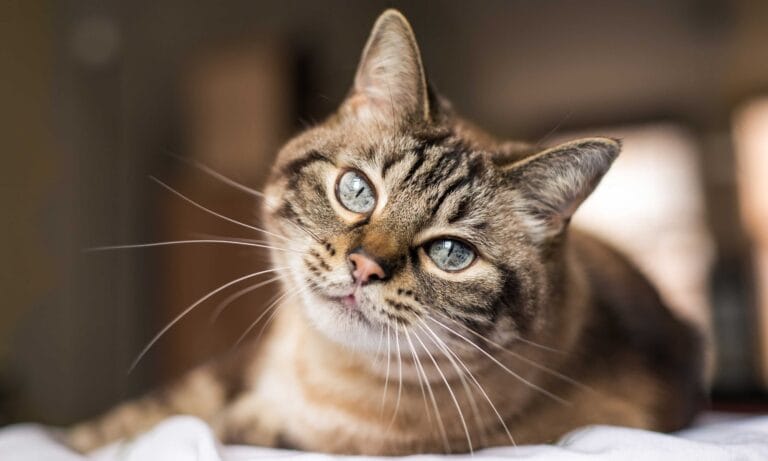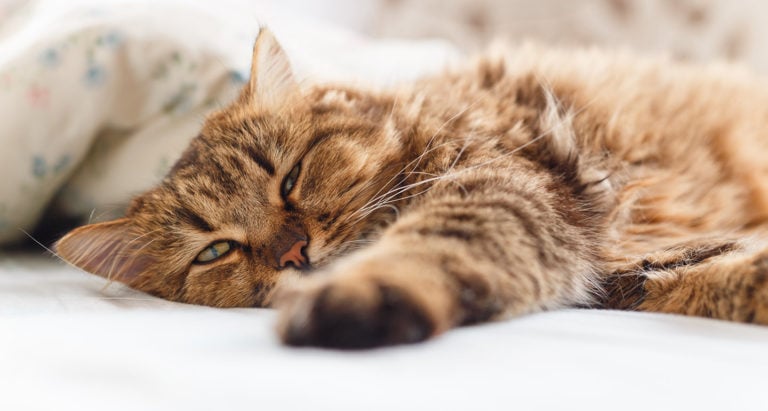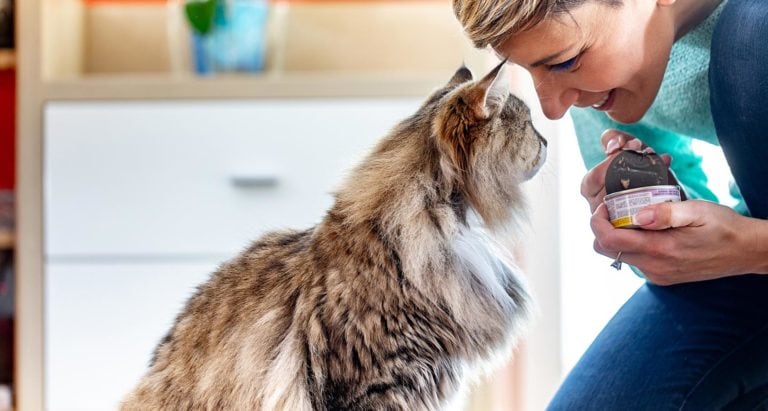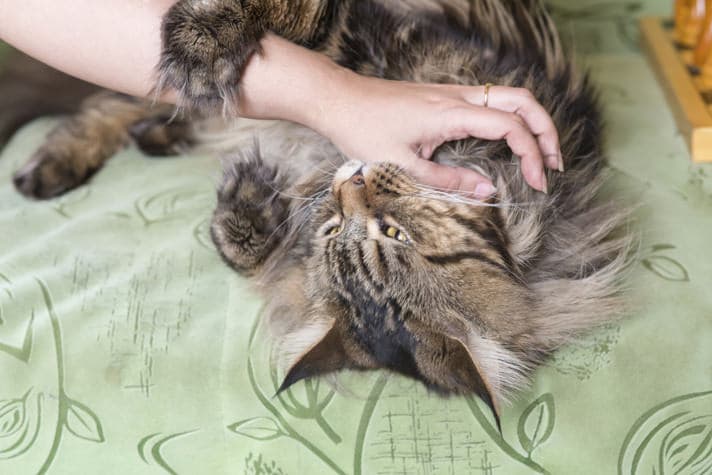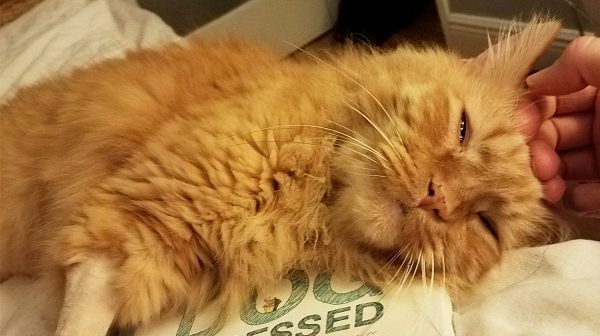Urinary incontinence is involuntary or uncontrollable. The condition manifests itself when a previously litter box-trained cat loses control of his or her bladder, resulting in occasional accidents ranging from small urine leaks to inadvertent voiding of a large amount of urine. Problems with the bladder often are caused by an impaired bladder or from some kind of obstruction in the bladder.
Incontinence is most likely to affect middle-aged to older cats, as well as large cat breeds. The condition can be bothersome to both pet owners and our feline patients, but usually a physical examination and lab work allows a veterinarian to diagnose and treat the problems–making life better for all involved.
The symptoms may include involuntary urine leakage, wet hair on the lower abdominal area or between the rear legs, wet spots or puddles in the bedding or sleeping area, urinary tract infections, inflammation of the skin around the genitals and moist areas around the penis or vulva.
Causes Of Cat Incontinence
The causes of cat incontinence can vary widely. The following eight areas cover a majority of these:
1. Diabetes.
Diabetes in cats, especially seniors, can result in affected cats drinking excessive amounts of water, which subsequently results in increased urination. If the cat fails to make it to the litter box in time, this can result in “inappropriate urination” and go under the heading of incontinence. Properly controlling diabetes in these cats helps to eliminate this form of feline incontinence.
2. Bladder stones.
Bladder stones occur when minerals combine and form large crystals that can reach the size of peas, which can significantly irritate the lining of the bladder. If bladder stones reach the urethra, it can become difficult for the cat to urinate. This is especially significant in male cats. You will see him straining in the litter box with little to no urine coming out, or the urine will have a pinkish tint from blood.
3. Kidney stones.
Kidney stones develop when crystals bind in the kidneys, causing blockages and irritation. A cat with kidney stones will have a tender abdomen and often has problems urinating. Blood is often visible in the cat urine.
4. Overactive bladder syndrome, urinary tract infections and chronic inflammatory disease can all go under the heading of feline urologic syndrome (FUS), feline lower urinary tract disease (FLUTD) and/or feline idiopathic cystitis (FIC).
If a urinary tract infection persists and spreads to the bladder, scarring may occur. The scarring will change the integrity of the bladder wall, which changes the amount of urine the bladder can hold, resulting in the cat needing to urinate more frequently. As a result, more accidents can occur; this can be viewed as incontinence.
5. Bladder cancer.
Tumors build up on the inner lining of the bladder resulting in increased pressure on the bladder caused by a mass, and this may eventually cause a blockage of the urethra. Symptoms include straining while urinating or defecating, feline incontinence and lethargy.
6. Underdevelopment of the bladder or other birth defects.
With old age, and possibly the onset of senility, some cats lose sense of when they need to go to the bathroom. They may wait too long and dribble on the way to the litter box, or they may forget where their litter box is located. You may find it easier to keep one cat litter box on each level of your house to avoid these feline incontinence accidents as a result of old age. The more boxes within easy reach of your cat, the less chance of messy and smelly accidents appearing everywhere.
7. Cats who are carrying litters of kittens or elderly cats.
Leaking and dribbling of cat urine are common problems. In addition, when the bladder is full it pushes against the bowels, causing accidents with defecation.
8. Poor bowel control
Cases of cat diarrhea may be lumped under the heading of incontinence. Common causes of feline diarrhea include spinal cord injuries, particularly including damage to the tail. Issues such as poor diet, digestive problems and bacteria or viruses in the intestines are also possible.
Treatment Of Urinary Incontinence
Your veterinarian will recommend the appropriate diagnostic tests to determine the cause(s) of your cat’s incontinence, and then prescribe a treatment plan. In many cases, prescribed medication will resolve the issue. If the condition can be treated with medications, several options might be available. In cases of incontinence caused by obesity, a weight management and diet plan is required. If incontinence is due to inflammation of the urinary tract or bladder, antibiotics may be used. For more complicated cases, surgery may be performed to remove a bladder or urinary tract obstruction, or for repairing the bladder or urinary tract.
Most cats suffering from incontinence will respond well to medications and have a full recovery. Inflammation is a common issue associated with this medical condition, and it can be treated with topical ointments and antibiotics as prescribed by your veterinarian.
As far as prevention, there are currently no known preventive measures for this medical condition.
Though incontinence can be frustrating both for you as well as your pet, in many instances a cause can be determined and it can be treated. Getting the aid of a veterinarian will help in using the most effective means of treatment.
By: Dr. Byron de la Navarre, DVM
Featured Image: Gina Cioli/I-5 Studio
Share:

